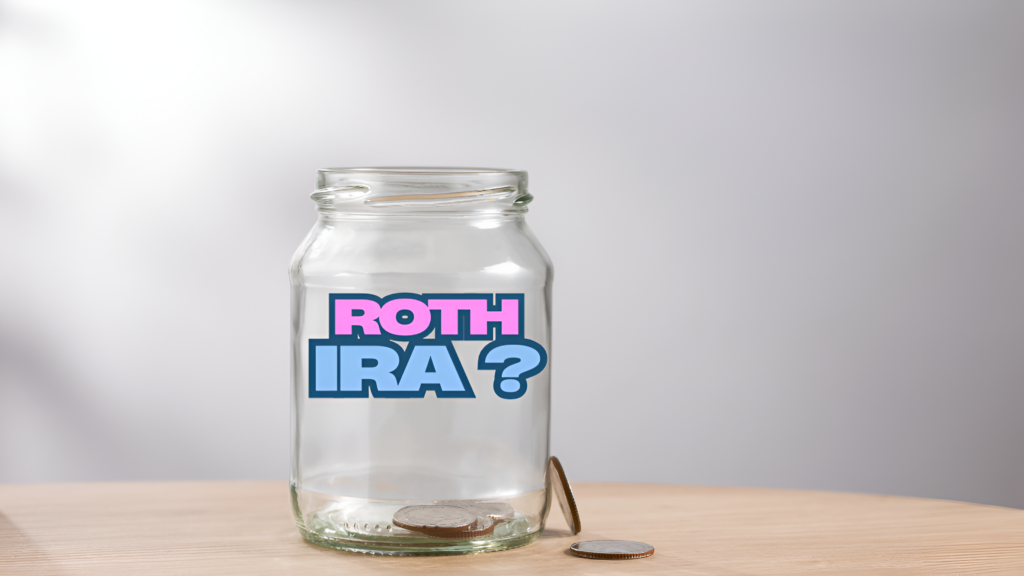Introduction
A Roth IRA is a powerful retirement savings tool with tax-free growth and withdrawals, but it’s not without risk. Many investors ask: Can you lose money in a Roth IRA? The answer is yes—but not due to the account itself. Losses typically stem from market downturns, high fees, or poor investment choices. Understanding these risks is key to protecting your savings. By diversifying your portfolio, minimizing costs, and maintaining a long-term strategy, you can reduce potential losses. While no investment is entirely risk-free, smart planning can help you maximize the Roth IRA’s benefits and secure a stronger financial future.
How a it Works
A Roth IRA allows you to contribute after-tax dollars, which grow tax-free. Unlike traditional IRAs, you won’t pay taxes on qualified withdrawals in retirement. However, your account’s performance depends on your investment choices, which are subject to market forces.
How Can You Lose Money in a Roth IRA?
1. Market Volatility
The most common way to lose money in a Roth IRA is through market fluctuations. They are typically invested in stocks, bonds, or mutual funds. If the market declines, so does your account value. However, losses are only realized if you sell investments during a downturn. Historically, markets recover over time, so a long-term perspective is key.
2. Poor Investment Choices
Investing in high-risk assets like individual stocks, speculative ventures, or poorly managed funds increases loss potential. For example, putting all your funds into a single failing company’s stock could significantly erode your balance. Diversification across sectors and asset classes reduces this risk.
3. Fees and Expenses
High management fees, expense ratios, or account maintenance costs can silently drain your savings. For instance, a 1% annual fee might seem small, but over decades, it can cost thousands in compounded growth. Opt for low-cost index funds or ETFs to minimize expenses.
4. Early Withdrawal Penalties
Withdrawing earnings before age 59½ or before the account is five years old triggers a 10% penalty plus taxes. If your investments gained value, pulling money early could mean losing a chunk to penalties—effectively negating growth.
5. Inflation Risk
While not a direct dollar loss, inflation can reduce purchasing power if your investments underperform. For example, a 2% return during 3% inflation means your money loses real value. Combat this by investing in growth-oriented assets like stocks.
How to Protect from Losses?
1. Diversify Your Portfolio
Spread investments across stocks, bonds, real estate (via REITs), and international markets. Diversification cushions against sector-specific downturns.
2. Adopt a Long-Term Mindset
Avoid panic-selling during market dips. Historically, markets rebound, and holding investments allows recovery.
3. Choose Low-Cost Investments
Prioritize funds with expense ratios below 0.5%. Vanguard and Fidelity offer affordable index funds mirroring market performance.
4. Avoid Early Withdrawals
Let your money compound tax-free. Build an emergency fund outside your Roth IRA to avoid tapping retirement savings prematurely.
5. Rebalance Regularly
Adjust your portfolio annually to maintain your target asset allocation. This ensures you’re not overexposed to underperforming sectors.
Conclusion
While it provides tax-free growth, it’s not risk-free. Losses stem from market downturns, fees, or poor decisions—not the account itself. By diversifying, minimizing costs, and maintaining a long-term strategy, you can mitigate risks and harness it’s powerful benefits. Remember, retirement investing is a marathon, not a sprint. Stay informed, stay patient, and let compounding work in your favor.
FAQs
Q. Can a Roth IRA go negative?
- No. While investments within the account can lose value, your balance can’t drop below $0. You won’t owe money due to poor performance.
Q. Are Roth IRA losses tax-deductible?
- No. Unlike taxable accounts, Roth IRA losses aren’t deductible since contributions are made with after-tax dollars.
Q. Does the government insure Roth IRAs against losses?
- No. Roth IRAs aren’t FDIC-insured like savings accounts. Your protection lies in smart investing and diversification.

Owner of Paisewaise
I’m a friendly finance expert who helps people manage money wisely. I explain budgeting, earning, and investing in a clear, easy-to-understand way.


Your style moves beautifully, it’s a joy to read.
Your blog continuously captures my interest from start to finish. I can never scroll away without absorbing your complete article.